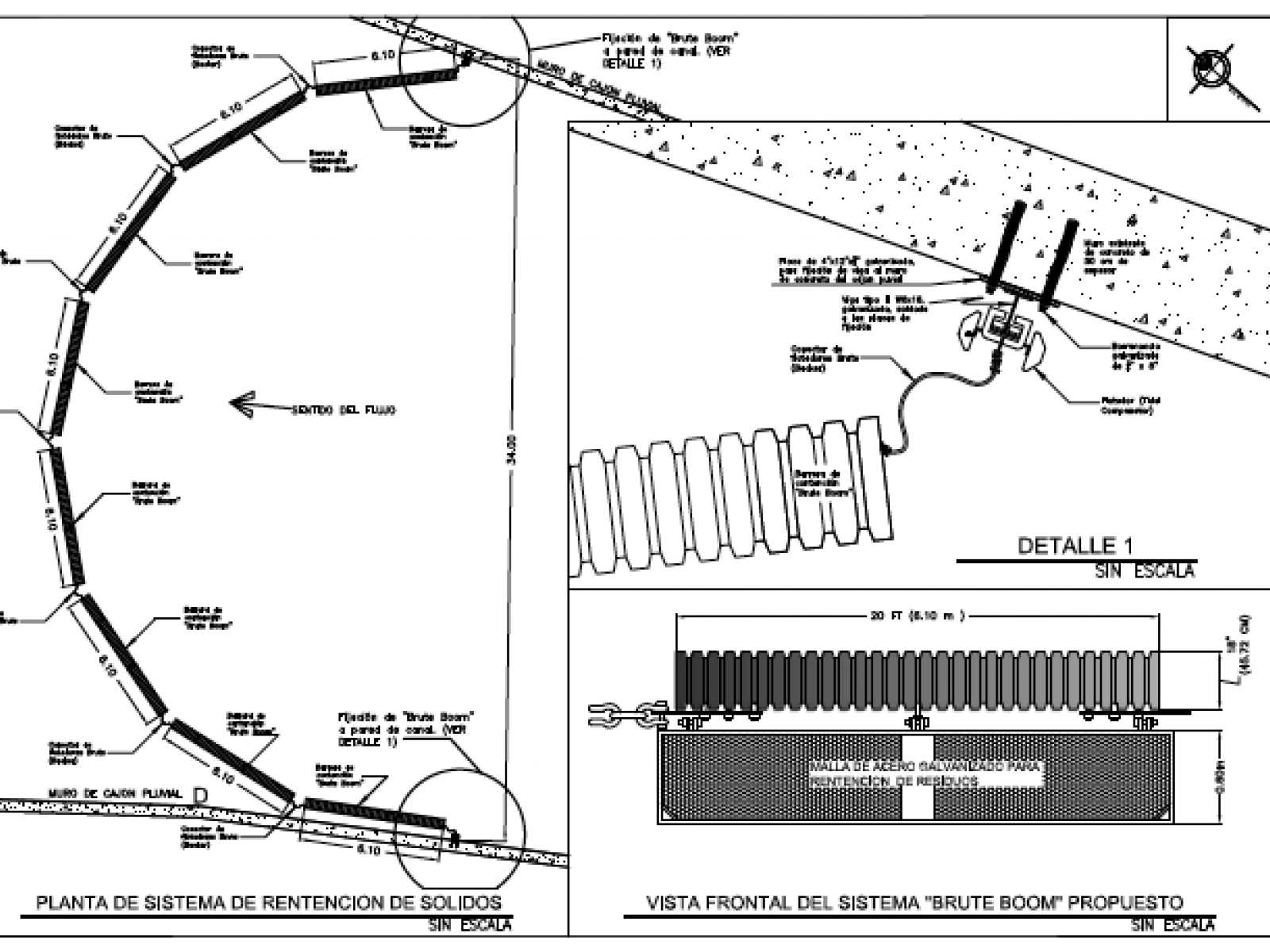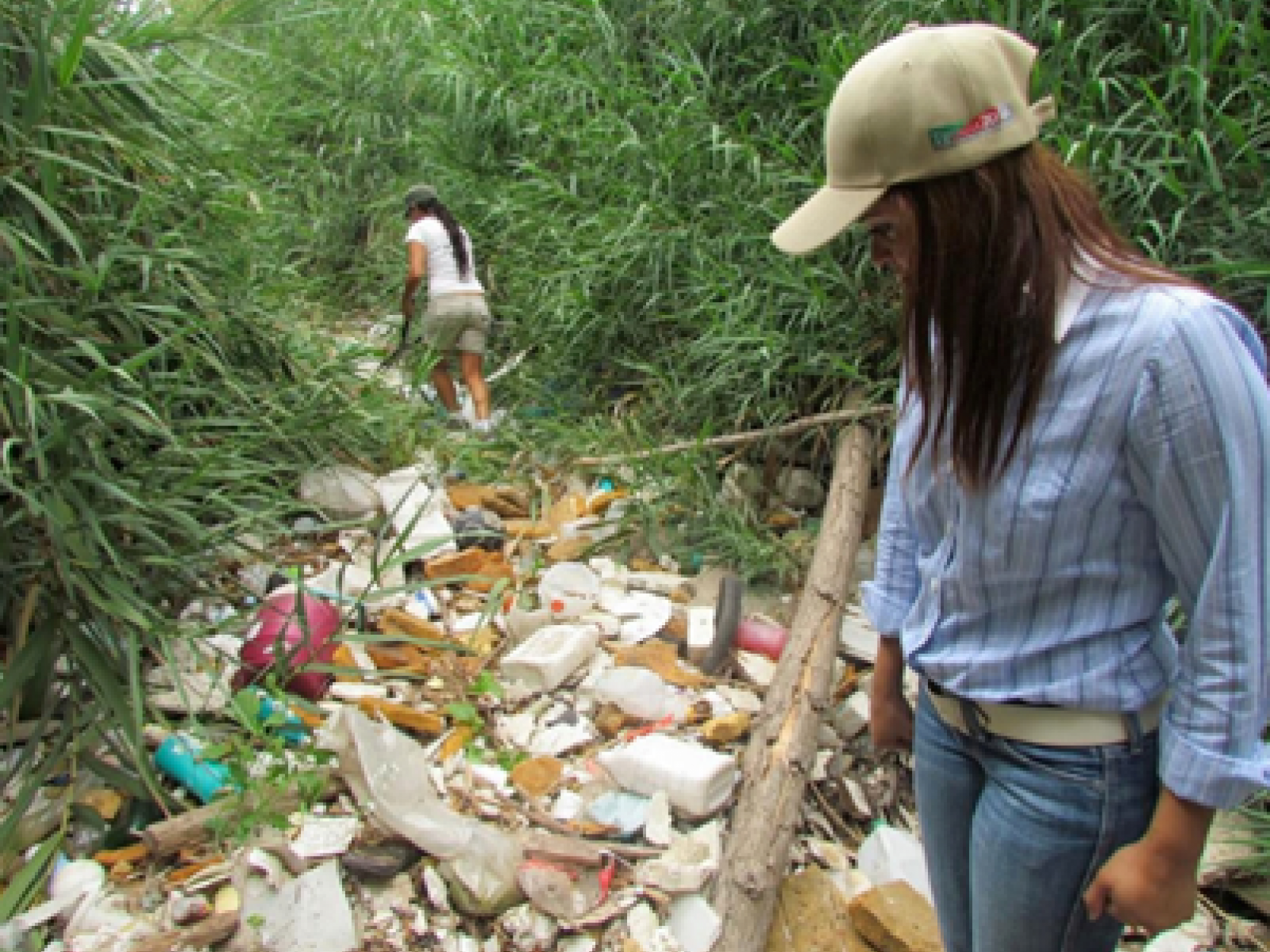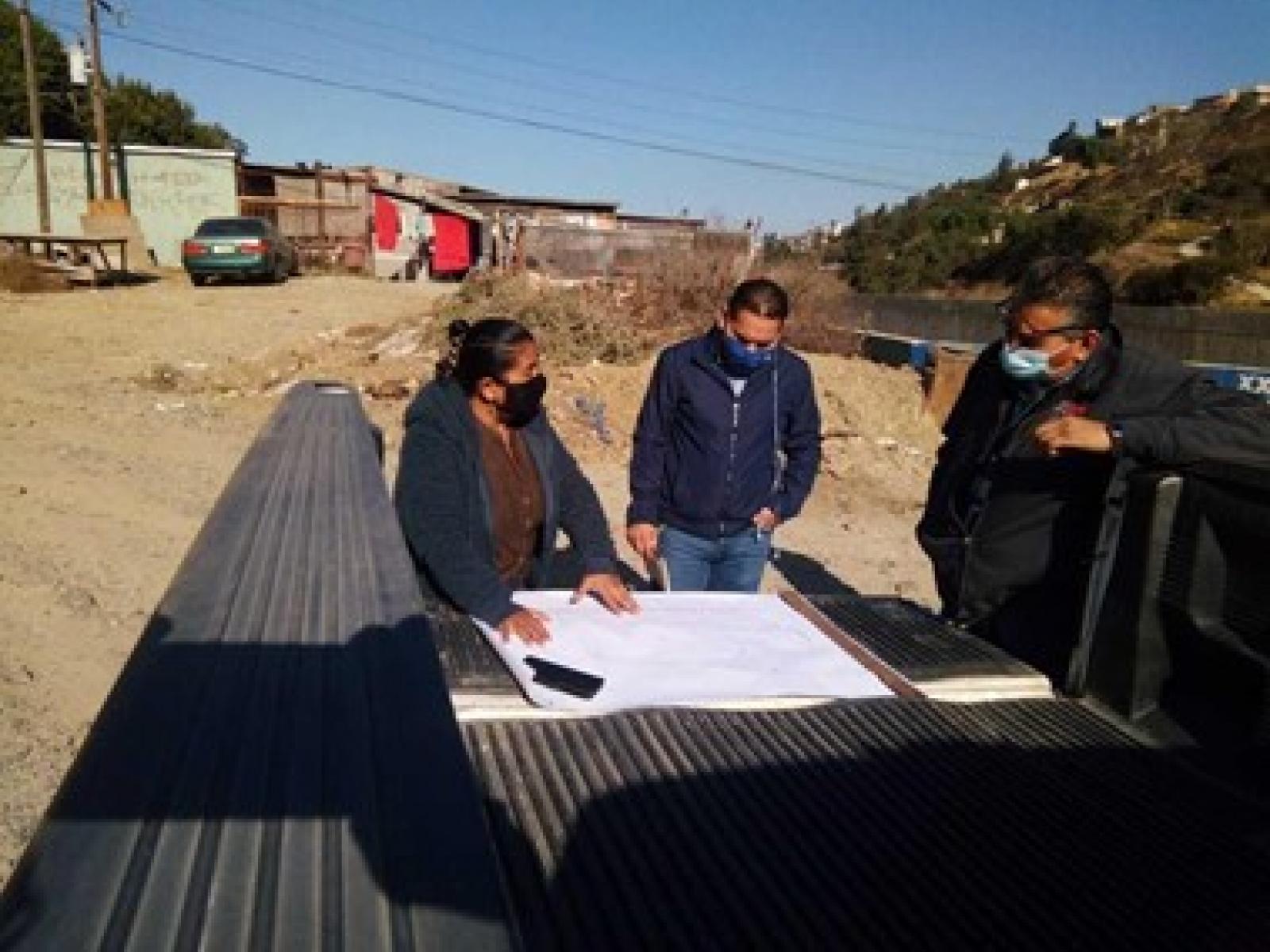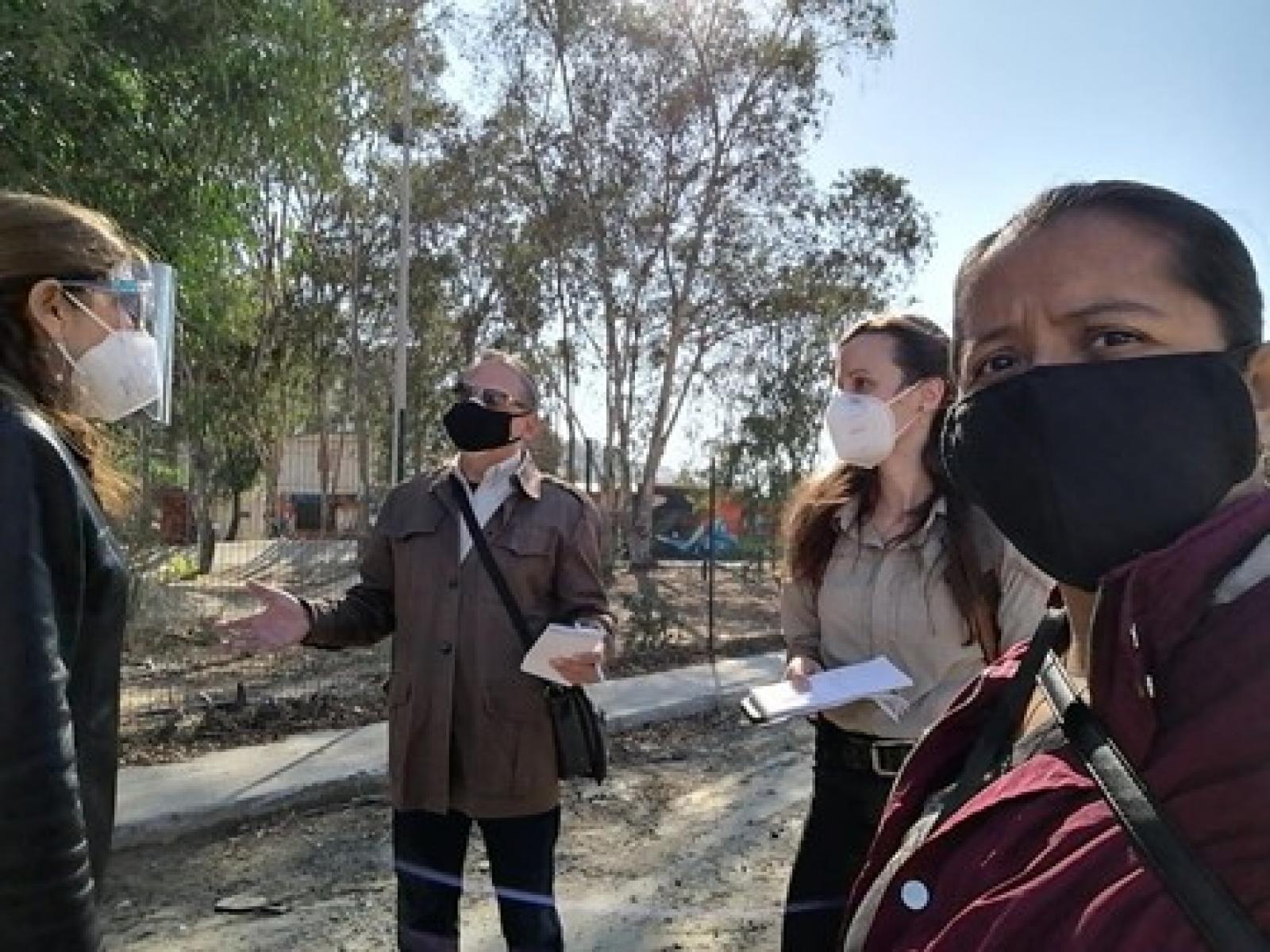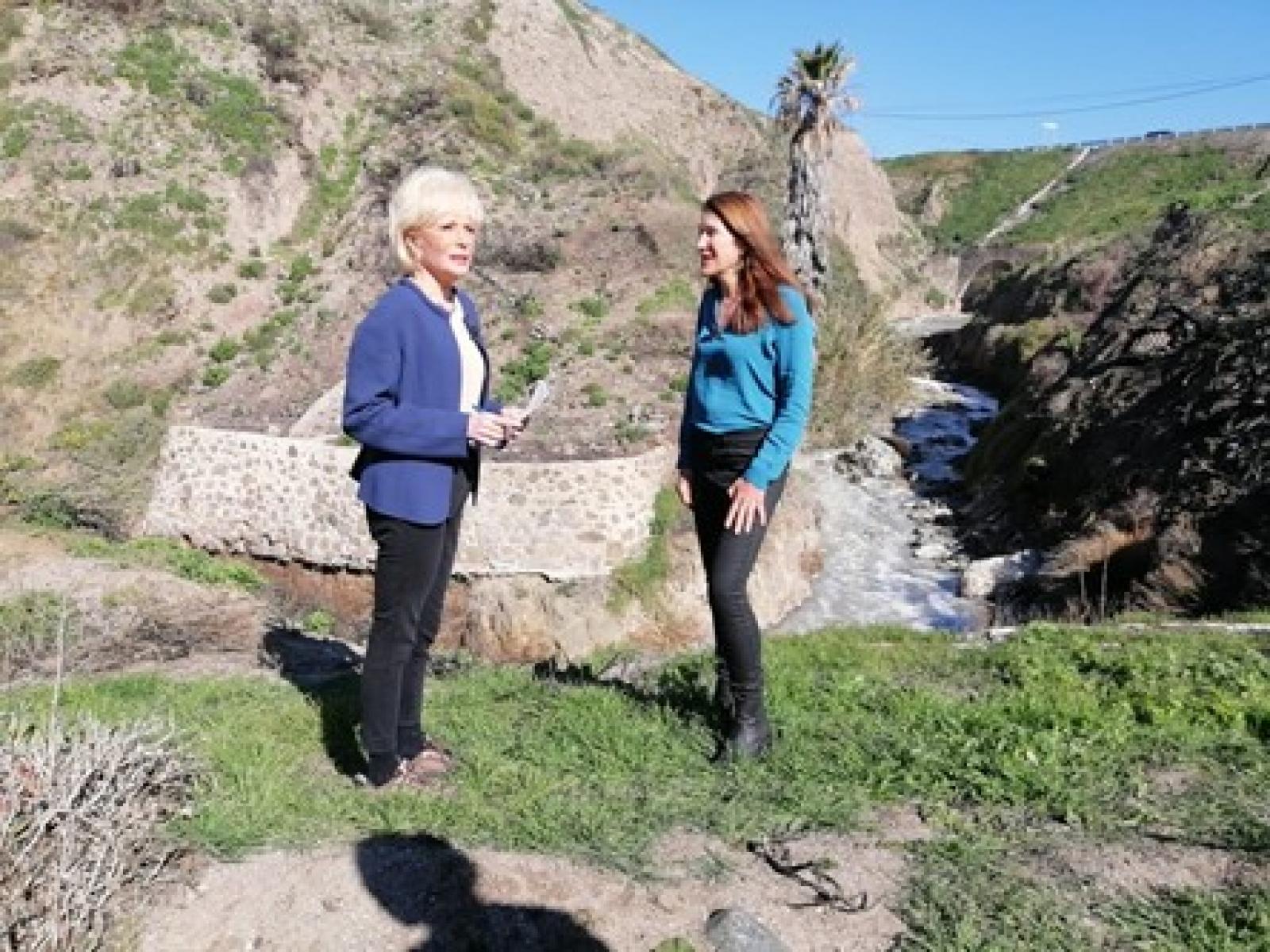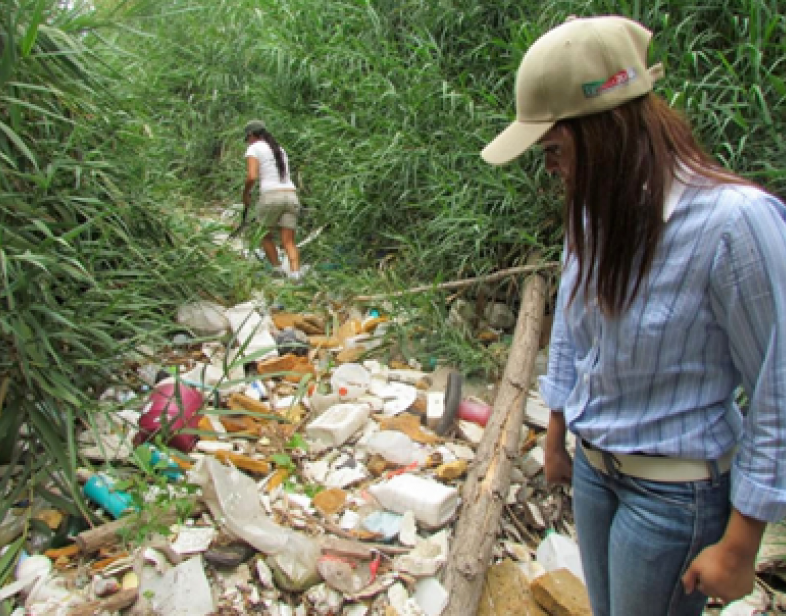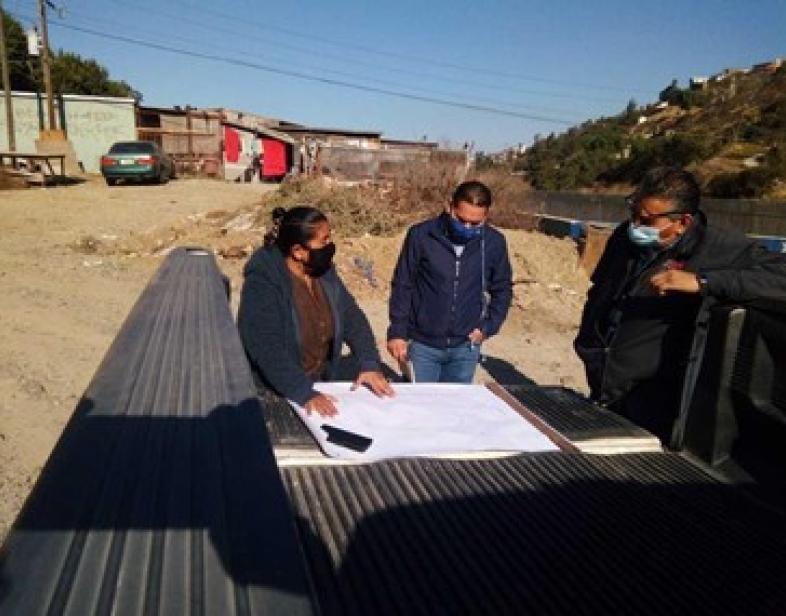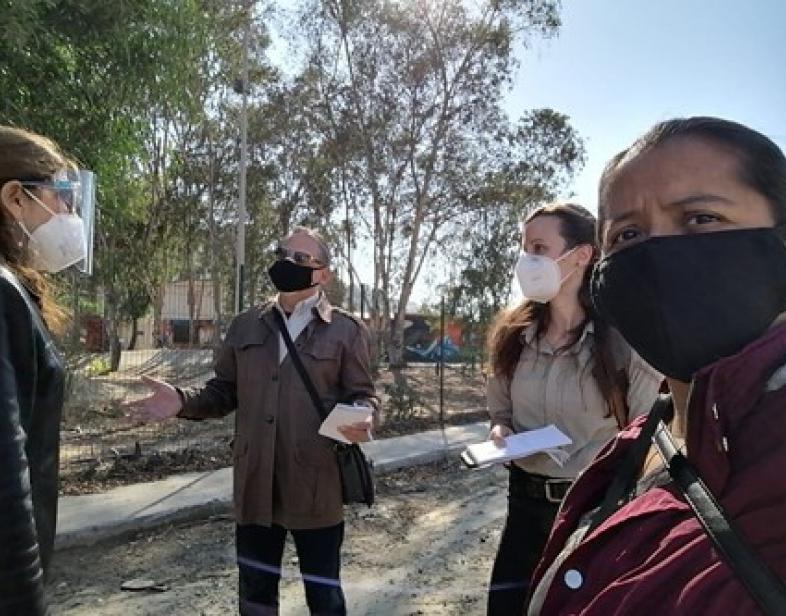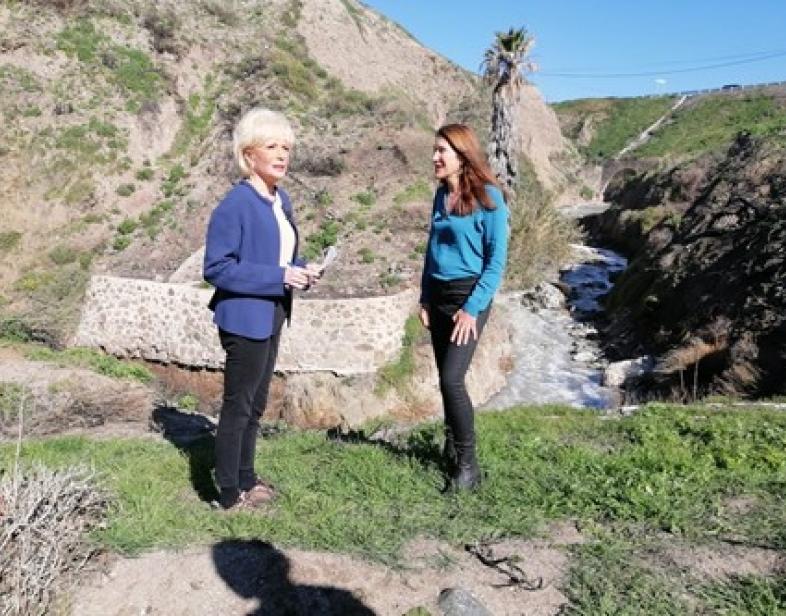An Overview Of Our Solution
As a technical solution to plastic and marine debris entering the Pacific Ocean, WILDCOAST is installing a Brute Boom to capture floating and submerged plastics in Los Laureles Canyon, Tijuana, Mexico a major tributary of the Tijuana River Watershed, located on the US-Mexico border. Up to 25% of plastic waste originating in Tijuana and crossing the international border via the Tijuana River will be captured, sorted, and legally discarded, recycled, or repurposed as material for community parks and green infrastructure projects. The solution was adopted by the City of Tijuana, Mexico's federal water authority, local communities, and NGOs in the US and Mexico. Support is shown by municipal and federal permits obtained, completed construction of the Brute Boom, installation plans, commitment of an installation team, and a scheduled installation for January 2021.
- Population Impacted: 93,000
- Continent: North America
背景分析
The Pacific coastline at the United States-Mexico border is at the terminus of the Tijuana River Watershed. This binational watershed covers 1,740 square miles, 75% of which are in Mexico and 25% in the United States. The watershed’s coastal area contains two protected areas totaling 18,987 acres of some of the most ecologically significant salt marsh and coastal sage scrub ecosystems in California. These protected areas offer needed nature-based recreation for local communities, among the lowest-income and most park poor in San Diego County. Ecosystems and public health in border communities are threatened by Tijuana-generated plastics transported by the Tijuana River to coastal areas and the Pacific Ocean. An estimated 65,000 residents of Los Laureles, a tributary stream of the Tijuana River, generate approximately 54,740 tons of solid waste a day, of which less than 2% is collected by Tijuana’s Public Services Agency. The remaining is abandoned on the banks of the tributary.
描述您希望目标受众采用的技术解决方案。
In 2021, WILDCOAST will install the first-ever plastic retention system on the Mexico side of the Tijuana River Watershed. This Brute Boom will be installed in Los Laureles Canyon, a tributary stream and significant trash source for the Tijuana River. The system consists of a heavy-duty containment barrier designed to capture and contain floating and submerged trash before it enters the river. WILDCOAST and local partners are installing the system in a cement sediment basin on the canyon floor.
Waste collected by the system will be sorted, disposed, and recycled and repurposed where possible. Usable plastics will be provided to local projects such as community parks. Local partners will help in the sorting and removal of captured waste. The system will help remove up to 25% of plastic debris from entering the Tijuana River.
Meanwhile, WILDCOAST will launch a citywide communications campaign with local spokespersons to promote reducing consumption of single use plastics in Tijuana.
描述你的行为干预。
WILDCOAST used the following to motivate behavior change:
- Created a comprehensive plan for creation and installation of the Brute Boom and use of collected plastics.
- Joined the Clean Currents Coalition as one of nine teams combating the flow of plastics from rivers to the ocean through the Benioff Ocean Initiative.
- Conducted site surveys to inform design, installation, and use of the Brute Boom.
- Hired project coordinator in Tijuana to meet with local partners and oversee the project.
- Established partnerships to help sort, discard, recycle, and repurpose collected plastics.
- Partnered with 4Walls to repurpose plastic as building blocks for community parks and green infrastructure projects.
- Recruited community members to help sort captured plastics for disposal, recycling, or repurposing.
- Partnered with Promotora Ambiental (PASA), a waste management company in Mexico, to remove debris from the site.
- Met with local and state elected officials, media, and community members to obtain necessary permits, permission, and buy-in for installation and use of the Brute Boom.
- Invited elected officials to community events to see firsthand the problem and the desire for change.
- Scheduled radio interviews and TV segments, including a spot on 60 Minutes highlighting the issue of transboundary pollution and WILDCOAST’s installation of the Brute Boom.
- Conducted tours of the project site to explain the project and garner community support.
使用的行为杠杆
如需要,请更详细地解释你是如何使用杠杆的。
WILDCOAST is utilizing the following behavioral change levers:
- Choice Architecture: By installing the Brute Boom, plastics will be captured regardless of whether community members choose to reduce or recycle plastics.
- Information: WILDCOAST will reach more than one million residents in Baja California, Mexico through community events, billboards, public murals, commercials, radio spots, and social media which provide residents with information on the public health, social, and environmental benefits of recycling and options for recycling.
- Social Influences: Sports players are held in high esteem in Tijuana so WILDCOAST has partnered with several teams and players to lend their voices and credibility to the campaign.
- Rules and Regulations: WILDCOAST successfully advocated for the ban on many single-use plastics in Tijuana and is currently advocating for a statewide ban in Baja California.
描述项目的实施。
WILDCOAST’s solution involves the following activities to reduce ocean-bound plastic pollution:
- Capturing approximately 144,000 cubic feet of plastics via the installation of a trash boom (Brute Boom) in Los Laureles Canyon, Mexico.
- Collecting, sorting, disposing, recycling, and repurposing captured plastics.
- Using intercepted plastic waste as building materials for community-based projects including community parks.
- Developing and implementing a city-wide outreach and communications campaign to encourage communities in Tijuana to transition away from using single-use plastics, reaching an estimated audience of one million.
Previously installed trash booms and outlet screens in the Tijuana River Watershed (United States) are efficient at capturing floating trash once it enters the river, yet are insufficient to capture submerged trash. WILDCOAST’s installation of the more advanced boom in Los Laureles Canyon is capable of capturing both floating and submerged trash and will result in up to 25% reduction of plastic debris reaching the river and eventually the Pacific Ocean.
The primary challenge encountered was obtaining the buy-in and necessary permits to install the boom. Permitting and installation were further delayed by COVID-19. Government officials were subject to reduced hours and office closures which slowed the permitting process. Additionally, the installation of the Brute Boom, originally scheduled for December 2020, was delayed due to safety concerns regarding COVID-19. Meetings with community members were delayed. WILDCOAST remained diligent in following up with officials and partners, and followed strict COVID-19 safety protocol. WILDCOAST obtained all necessary permits and installation of the boom is scheduled for January 2021.
描述项目的主导者。谁在主导项目实施?
WILDCOAST is a non-profit that conserves coastal and marine ecosystems and addresses climate change through natural solutions. WILDCOAST is conserving over 31.6 million acres of ecologically important coastline, wetlands, islands, and marine wilderness. WILDCOAST is a member of the Clean Currents Coalition, a network of nine teams combatting plastic waste in rivers around the world.
WILDCOAST was founded in 2000 and currently has a team of 20 in the United States and Mexico. Our multilingual and multicultural staff (45% minorities; 55% female) in California, Baja California, Baja California Sur, Oaxaca, and Mexico City, is composed of biologists, geographers, conservationists, and social scientists with extensive conservation and community experience.
The project is led by WILDCOAST’s Conservation and Policy Director Fay Crevoshay and Border Coordinator, Rosario Norzagaray. Both have extensive experience working on complex environmental issues in the border region.
分享参与解决方案开发和实施的关键合作伙伴。
The Benioff Ocean Initiative provides funds to empower a global network of dedicated, passionate, and collaborative problem-solvers combating the flow of plastic waste from rivers to the ocean. This network, the Clean Currents Coalition, is nine interdisciplinary teams working around the world to pilot technologies for physical capture of plastic waste in highly-polluted rivers, and to catalyze policy-based, infrastructural, and societal change to reduce plastic waste inputs to those rivers. WILDCOAST is one of these teams.
4Walls International is a nonprofit empowering socially and environmentally degraded communities to turn trash into the building blocks for community buildings and will develop a community-centered management system and consult in outreach efforts.
Promotora Ambiental (PASA) is a Mexico-based company provisioning environmental services including private and residential collection, operation of landfills, sewage, and wastewater treatment. PASA is helping sort, shred, and clean plastic waste for this project.
The City of Tijuana is helping WILDCOAST draft and implement a formal recycling program which incentivizes plastic recycling.
The National Water Commission (CONAGUA) in Mexico is an administrative, technical advisory commission of Mexico's Ministry of the Environment and Natural Resources (SEMARNAT). CONAGUA administers national waters, manages and controls the country's hydrological system, and promotes social development.
谁采用了期望的行为,采取的程度如何? 解释一下你如何测量行为变化的。
WILDCOAST’s Brute Boom was adopted by the City of Tijuana, Mexico's federal water authority (CONAGUA), local communities, and NGOs in the United States and Mexico. The City of Tijuana and CONAGUA demonstrated full support for the project by issuing permits for the installation and use of the trash boom. Initial behavior change from local community members has been demonstrated by the attendance of dozens of residents at community forums and site tours.
WILDCOAST is measuring behavior change in regard to plastic consumption and recycling, like changes of household waste practices, through pre and post surveys.
Additional metrics of success will include the passage of a statewide single-use plastic ban, a reduction in the amount of plastics entering the river, and a reduction in the amount of plastic reaching the Pacific Ocean from the Tijuana River.
项目是如何影响水污染的?请详细说明并包括相关的测量方法。
This project is reducing water pollution in the Tijuana River Watershed by:
- Intercepting floating and submerged refuse before it reaches the Tijuana River. This is anticipated to result in a 25% reduction of input of plastics into the Pacific Ocean from the Tijuana River.
- Removing captured plastics for disposal, recycling, and repurposing.
- Leading grass-roots efforts to increase plastic recycling efforts in local communities.
- Working with the City of Tijuana to improve pollution-related infrastructure, including access to trash removal and recycling.
- Advocating for a statewide ban of single-use plastics in Baja California.
您的解决方案如何促进平等(包括种族、性别、民族、社会阶层/收入,或其他)?
The inadequate disposal of residential solid waste in Los Laureles leads to water, land, and air contamination, threatens life and property from flooding, degrades habitats, and affects open space for communities locally and downstream in San Diego County. Less than 2% of the trash generated in Los Laureles is collected by Tijuana’s Public Services Agency. Residents of this area live below the poverty line and do not have access to services unless provided by the government.
WILDCOAST’s project provides solutions to equity challenges by: 1) Increasing government-sponsored public services such as trash infrastructure, services, and recycling; 2) Improving public health by decreasing water pollution; 3) Increasing recreational opportunities along the Tijuana River Watershed on both sides of the U.S.-Mexico border; 4) Using captured plastics as the building blocks for new community buildings; and, 5) Beautifying the region through trash reduction and local art.
社会和/或社区是如何受益的?
In addition to recycling plastics, project partner 4Walls International is removing PET bottles and using them as building bricks for community-based projects. 4Walls International is building a community park with benches, shaded areas, and other amenities by hiring local workers and repurposing the materials removed from the capture device in Los Laureles. These projects, along with the reduction in plastic waste, will provide a cleaner, healthier community.
环境是如何受益的?
The Tijuana River National Estuarine Research Reserve and State Marine Conservation Area, together comprising 18,987 acres, are downstream from Los Laureles and are known for their biodiversity and high levels of endemism. The endangered flora and fauna of this area will benefit from decreased pollution of the Tijuana River. The TRW is also home to important blue carbon ecosystems, which when properly conserved help sequester atmospheric carbon and act as a natural solution to climate change.
可持续发展如何得到促进?
WILDCOAST successfully advocated for a single-use plastics ban in Tijuana and is meeting with elected officials in Mexico to discuss a state-wide ban, as well as increased government-sponsored public services. Under this model, residents will have increased access to improved trash infrastructure, services, and recycling. Many residents live below the poverty level and private services are either non-existent or too expensive, so this approach provides the most economically sustainable solution.
可持续性:描述你的解决方案的经济可持续性。
This project relies on a combination of grant funding and individual giving. The Benioff Ocean Initiative and University of California Santa Barbara have provided three years of funding to implement the project (beginning in 2020). Strategic partnerships, such as with 4Walls and PASA, allow for sustainable ongoing maintenance and use of the boom. Additionally, WILDCOAST engages local community members to sort and discard, recycle, or repurpose plastics collected in the Brute Boom. By recycling or repurposing and selling collected trash, the local community will have access to market-based revenue to increase economic gains within the community while reducing plastic and debris into the river.
投入产出:实施这些活动的成本是多少?与你上面的结果相比,你的结果如何 这投资吗?
One Time
Trash boom design, manufacture, and installation: $30,000
Communication, marketing, education and community events: $24,500
Permit cost: $2,500
PPE, construction tools, IT equipment: $12,500
Recurring
Trash and plastics collection from river (4x per month): $15,000/year
The annual value of goods and services provided by a high functioning wetland is $70,000 per acre, whereas services from a degraded ecosystem are valued at $5,000 per acre. Therefore, the services offered by the project site are between $94,935,000 per year if the ecosystem remains degraded to upwards of $1,329,090,048 if properly restored and managed. Combined with the public health and social benefits, this project is worth the moderate upfront costs.
如何能将这个解决方案成功推广在其他地方?
Trash booms have previously been installed in the Tijuana River Watershed and elsewhere to reduce the amount of plastics reaching the ocean. WILDCOAST’s project provides a novel and more successful solution by utilizing an approach combining behavior change, policy change, and the installation of an advanced Brute Boom trash capture system. This project is replicable elsewhere, with appropriate funding (~$70,000 in one time initial costs and $15,000 in ongoing annual costs), partnerships, and government support.
Key components for replication include:
- A feasibility assessment to determine appropriate placement of the trash boom.
- Funding for the design, manufacture, and installation of the boom.
- Company to remove plastic from boom (4x monthly during this project).
- Buy in from elected officials to support single-use plastic bans and increased public services.
- Buy in from community members to reduce use of single-use plastics and increase recycling efforts.
